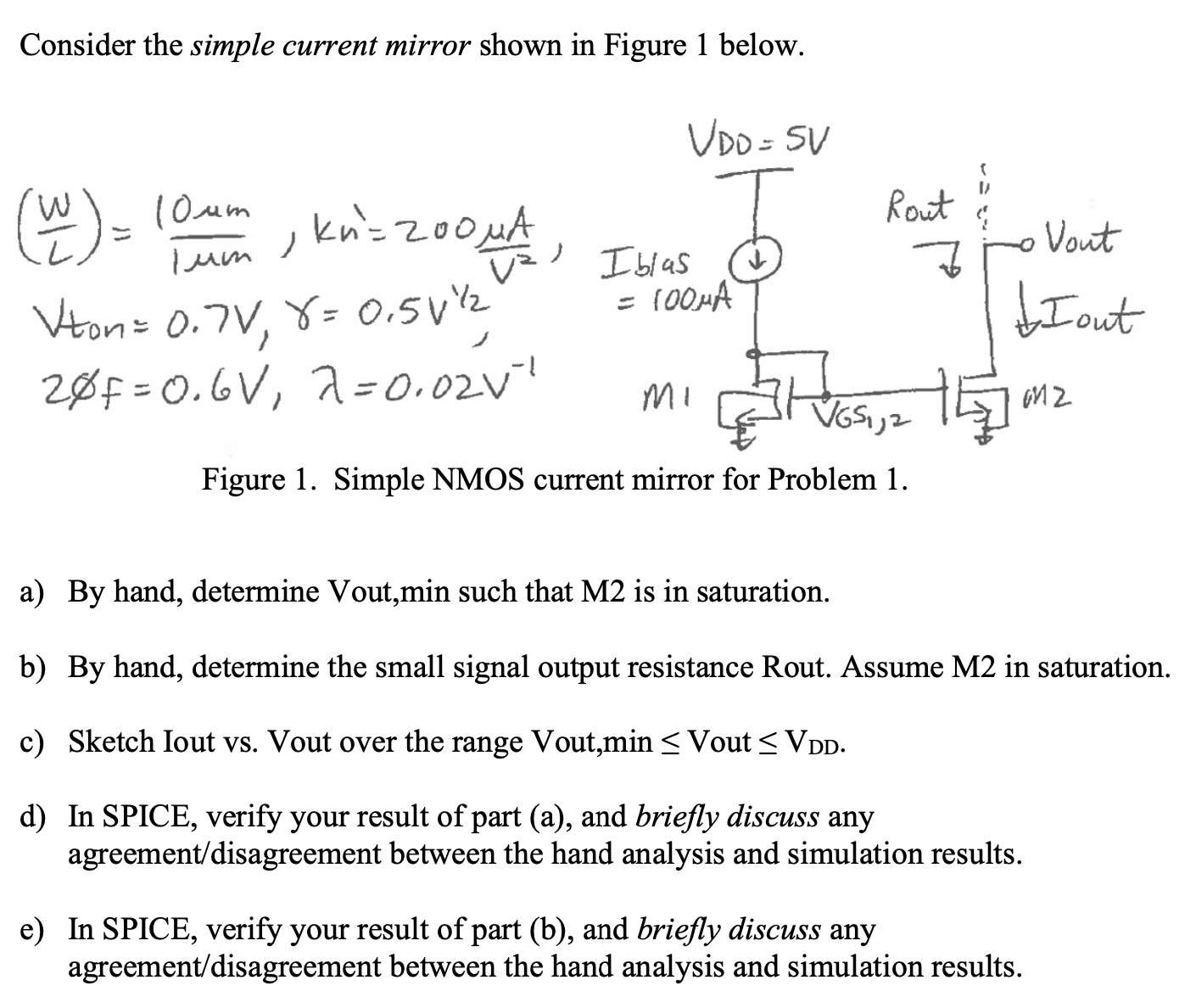Consider the simple current mirror shown in Figure 1 below. Figure 1. Simple NMOS current mirror for Problem 1. a) By hand, determine Vout, min such that M2 is in saturation. b) By hand, determine the small signal output resistance Rout. Assume M2 in saturation. c) Sketch Iout vs. Vout over the range Vout, min = Vout ≤ VDD . d) In SPICE, verify your result of part (a), and briefly discuss any agreement/disagreement between the hand analysis and simulation results. e) In SPICE, verify your result of part (b), and briefly discuss any agreement/disagreement between the hand analysis and simulation results.
